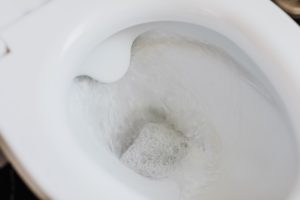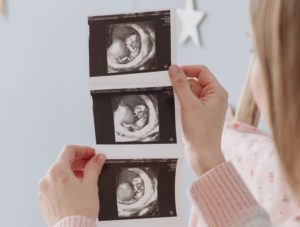Chemical abortion is devastating for everyone involved. The tiny, defenseless baby is killed in a savage manner. Additionally, the mother – who often goes through an unexpected and significant amount of pain – must live with the traumatic memories of seeing the humanity of her unborn child.
We know how chemical abortion affects people, but evidence suggests that the two-pill abortion regimen also negatively affects the environment.
The first abortion pill – mifepristone or RU 486 – blocks progesterone, a hormone that’s naturally produced during pregnancy. Blocking progesterone prevents nutrients from reaching the unborn baby, thus killing him or her. The second pill – misoprostol – is taken 24 to 48 hours later. Misoprostol causes heavy bleeding and severe contractions, expelling the now-deceased child from his or her mother’s womb.
Increasingly, both of these lethal medications are taken at home without a medical examination or physician’s supervision. Consequently, the mother is forced to dispose of her baby’s body on her own. Abortion workers often instruct mothers to flush their babies down the toilet once the chemical abortion is complete.
There’s no denying that this method of disposal is demeaning and dehumanizing toward the child who was killed – a reckless and disgusting practice.
According to the American Academy of Family, which supports abortion:
“Home based health care can create medical waste which can be hazardous if not disposed properly. Inappropriate medical waste disposal can pose harmful environmental concerns and significant health risks to the public, which include but are not limited to, potential water contamination, inadvertent sharp-stick injuries and toxic exposure to pharmaceutical products.” [Emphasis added]
There are many different types of medical waste. One is pathological waste. MCF Environmental Services defines it as “any type of waste consisting of human or animal body parts.” Pathological waste is often produced during surgeries and autopsies. It is crucial that it be disposed of properly. Organs, tissues, and other forms of pathological waste must go through medical incineration.
Chemical abortion is FDA-approved up to 10 weeks post-fertilization. The human heart starts beating between 3 and 4 weeks. Limbs and major organs begin to form between 4 and 5 weeks. The intestines and digestive system begin to function between 7 and 8 weeks.
 A child killed through chemical abortion is irrefutably a unique human being with a complex, developing autonomy. A child killed by RU 486 – and the accompanying placenta and umbilical cord – would qualify as pathological waste. Therefore, instructing a mother to flush her baby’s body down the toilet is irresponsible on the part of the abortion workers.
A child killed through chemical abortion is irrefutably a unique human being with a complex, developing autonomy. A child killed by RU 486 – and the accompanying placenta and umbilical cord – would qualify as pathological waste. Therefore, instructing a mother to flush her baby’s body down the toilet is irresponsible on the part of the abortion workers.
We now have evidence that exposing these tiny victims of abortion, and his or her accompanying tissue, is having a negative impact on the environment. Since the COVID-19 crisis, the number of women utilizing chemical abortion pills to kill their unborn babies has surged, and its impact on the environment has grown.
A study conducted by the National Institute of Health found that exposure to the RU 486 abortion drug has a negative effect on aquatic life:
“A long-term exposure of RU 486 resulted in masculinization of female fish… our data strongly indicates that a long-term exposure of RU 486 resulted in sex reversal of XX female fish…” [Emphasis added]
We know improperly disposing of pathological waste can harm the environment. We have proof that RU 486 by itself impacts wildlife. A child who was killed through chemical abortion may still have RU 486 lingering in his or her system. Will this combination compound the negative environmental effects?
Fortunately, many are pushing back against this cruel and dangerous protocol. They are fighting to protect the environment and restore the dignity of deceased unborn children.
In May 2022, Rep. Jim Banks created the Respectful Treatment of Unborn Remains Act, a bill that would prevent abortion workers from throwing the remains of preborn children into toilets or sinks.
Students for Life of America is asking the FDA to update the Risk Evaluation and Mitigation Strategy (REMs) and require that each abortion pill prescription come with a medical waste bag and catch-kit. Following a chemical abortion, the mother would place the deceased baby in the bag and bring said bag back to the abortion facility. The abortion workers would then be required to properly dispose of the child’s remains.
It’s crucial that we support these types of initiatives. Doing so will keep the bodies of these tiny victims out of the wastewater system, thus protecting the environment and returning some dignity to the children who were killed. And we focus attention on the tiny, defenseless victims of chemical abortion.
If the law recognizes deceased unborn children as human – if the law states that abortion’s victims should be respected and handled with care – we will be one step closer to ending abortion.
Defending life,
Leave a Reply